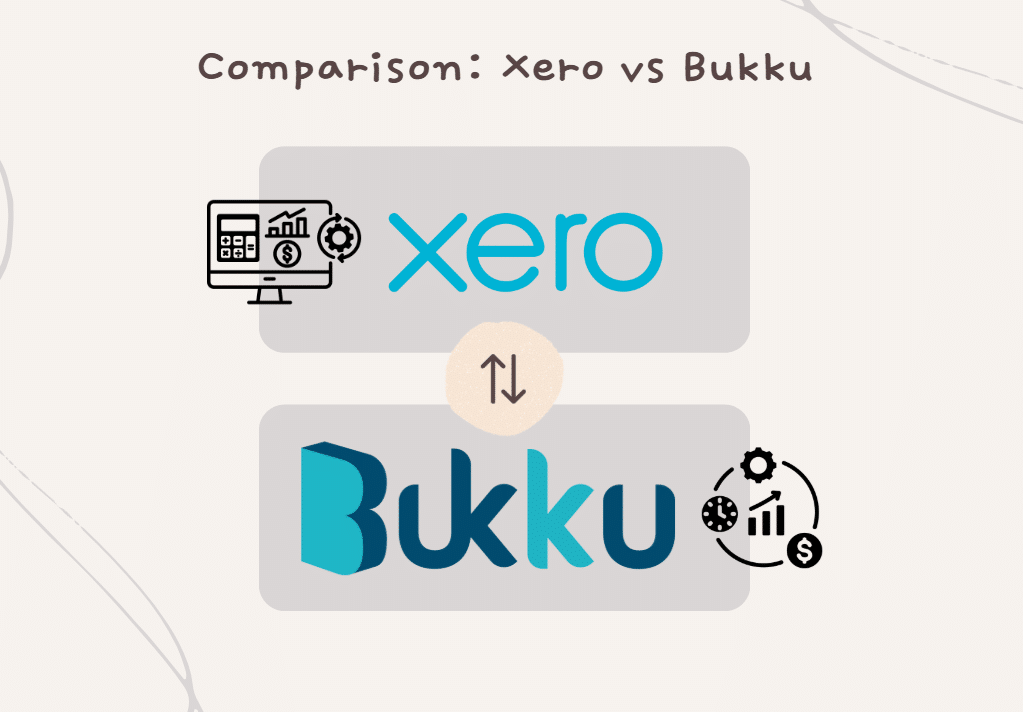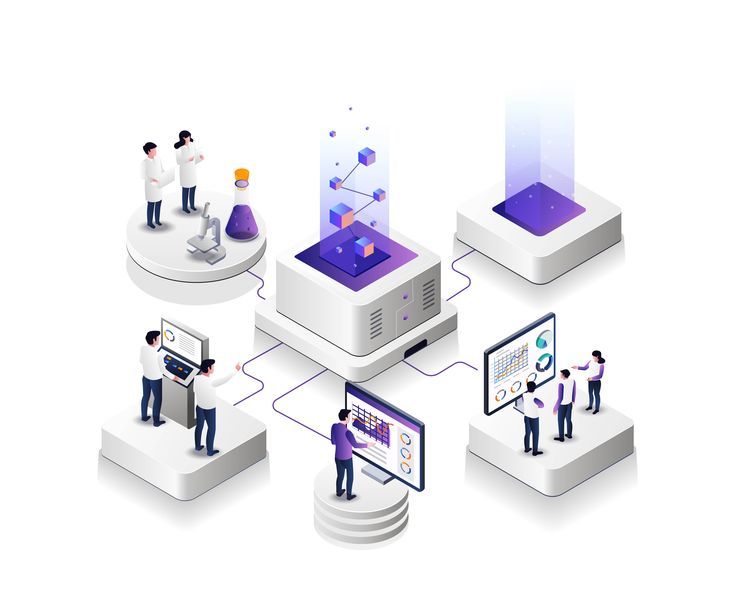What is cloud accounting software?
Cloud accounting software is a significant move from traditional forms of accounting. Unlike traditional systems where data is held locally on personal computers, cloud accounting is accomplished via remote servers accessed via the Internet. The system provides easier access to individuals to keep their financial data online with no local installation, facilitating remote working and real-time collaboration between team members.
The core activities of cloud accounting are not distinct from those of conventional systems, such as activities such as accounts payable and receivable, invoicing, and financial reporting. That is more convenient for companies having off-site teams or for companies requiring flexible working arrangements.
Briefly, e-invoicing software tools are a new way of managing finances, allowing organizations more flexibility, improved data security to protect sensitive financial information, and cost-effective scalability. They are the key features that make it an enjoyable choice for organizations that want to ease their accounting and invoicing processes nowadays.
Comparison: Xero vs. Bukku

Both Xero and Bukku are two of the most prevalent cloud accounting software in Malaysia for small and medium enterprises (SMEs). Both offer features to ease financial processes and support Malaysia’s needs for e-invoicing.
– User Interface and Accessibility
Xero: Xero is user-friendly on desktops and mobile. Users can work comfortably with colleagues and accountants in real time. Its dashboards are adjustable.
Bukku: Bukku offers a user-friendly platform. Its software application offers easier financial management. Users can track expenses and send invoices on the go.
– Core Accounting Features
Xero: Xero has many tools. It includes bank feeds, bank reconciliations, invoicing, expenses, project tracking, inventory, multiple currencies, and payroll. It has integration with over 800 third-party applications.
Bukku: Bukku focuses on core tools. It includes invoicing, expense tracking, inventory, and multi-currency. Bukku focuses on automation. It automates tasks like bank reconciliation and report generation. It handles fixed assets and sales tax, too.
– E-Invoicing Compliance
Xero: Xero provides hassle-free e-invoicing. It connects directly to Malaysia’s MyInvois portal. Customers can create, send, and follow up on compliant e-invoices in Xero. It also provides API integration for automated workflows.
Bukku: Bukku integrates completely with Malaysian e-invoicing systems. It allows automatic filing of compliant e-invoices with the Inland Revenue Board of Malaysia (IRBM). Bukku simplifies rejection and resubmission management. It also provides self-billed e-invoice and rejection management.
– Automation and Workflow Efficiency
Xero: Xero streamlines the invoicing process by reducing repetitive work. It automatically sends invoice reminders, handles bank feeds, and creates reports. Its automation reduces manual errors and improves cash flow management.
Bukku: Bukku streamlines a lot of work. It automatically uploads expenses along with document scans. It handles recurring billing, recurring invoices and inventory in real-time.
– Reporting and Insights
Xero: Xero has numerous reports, such as accurate tax reporting. It provides real-time cash flow, profitability, and more. Features like Xero Analytics Plus provide more advanced insights.
Bukku: Bukku has over 50 financial reports. Its dashboards show sales, expenses, and cash flow. Bukku’s tagging provides analysis in extreme detail. Its reports are Malaysian tax-compliant.
– Integration and Extensibility
Xero: Xero has an extremely extensive app marketplace. One can integrate payment systems, CRM, inventory, and more. These integrations create an adaptive ecosystem.
Bukku: Bukku supports integrations with e-commerce platforms like Shopee and Lazada through PayRecon. It even offers an open API for custom integration. These features make businesses stay connected and efficient.
– Customer Support and Training
Xero: Xero has web-based training and support facilities. Xero’s customer support helps users get the best out of the software.
Bukku: Bukku provides free e-invoicing training. It also includes live chat assistance. Bukku is geared towards usability and compliance for Malaysian-based companies.
– Pricing and Plans
Xero: Xero has a 30-day free trial for all. Its monthly subscriptions start at a reasonable rate. Clients can upgrade as their company grows. Xero subscriptions come with payroll and project features. Now, subscribe to Xero plan before 31 December 2025, users can get a 50% off for 3 years.
Caltrix Asia can also assist you in saving time to integrate e-invoicing software, Xero. Caltrix Asia is an Xero Gold Partner. They dedicate themselves to providing seamless cloud accounting solutions. They tailor these e-invoicing solutions to suit your business needs and assist you in deploying Xero quickly. You can enjoy having access to accurate financial records anywhere and anytime.
| Xero’s Plans |
Starter |
Standard |
Premium |
| Price (RM) per month |
125 |
230 |
330 |
Bukku: Bukku has a free plan for all users with limited features and a 30-day free trial for other plans. Its paid subscriptions offer features like inventory, expense claims, and detailed reports. Bukku’s subscriptions are for different levels of SME growth.
| Bukku’s Plans |
Launch |
Seed |
Grow |
Prime |
Elite |
| Price (RM) per month
(not include 8% SST) |
0 |
35 |
65 |
95 |
135 |
Check on the blog -> Digital Transformation with Xero: A Guide to Moving Your Business to the Cloud
How to Update Your E-invoicing System When Regulations Change
1. Perform a Gap Analysis
– Check Your Existing System:
View your existing e-invoicing system to examine if it is compliant with the latest rules, including specific requirements laid down by regulatory bodies like IRBM and the MyInvois portal.
– Identify Gaps:
Identify features or functionalities missing, like required data fields, validation rules, API support, or reporting capabilities incompatible with newer rules.
– Develop an Action Plan:
Develop an exhaustive plan to cover the gaps, prioritizing updates based on compliance schedules and operational effects.
2. Implement E-Invoicing System Updates
– Update Data Field Requirements:
Insert all mandatory data fields in accordance with the new regulations, including any IRBM or MyInvois portal taxonomy or data requirements as required.
– Validation Mechanisms:
Make your system validate e-invoice data both before and upon submission, ensuring hassle-free submission and acceptance via the MyInvois portal.
If your current system is not API-supported, install or upgrade API functionalities to facilitate interaction with the MyInvois portal. E-invoice submission, validation, and update of e-invoices can be done with API.
3. Train Staff
– Provide Training:
Provide training to your employees on the new data requirements, the validation process, and the optimal use of the MyInvois portal.
– Cope with Change:
Break Down Resistance. Explain why compliance is necessary and assist with making the transition.
4. Ensure Continued Compliance
– Regular Reviews:
Have regular reviews of your e-invoicing operations to guarantee continued LHDN e-invoice compliance with evolving rules.
– Monitor Updates:
Track any fresh announcements by regulators, updates to the MyInvois portal, or changes in exemption policies, and modify your system accordingly.
5. Additional Malaysia-Specific Recommendations
- Use the grace period to roll out your system in stages without triggering immediate sanctions.
- Know the adjustment business processes and issuing debit/credit notes within the permissible time.
- Verify whether your business entity is exempted or subject to special rules, for instance, MSMEs.
Enhancing your e-invoicing system in line with regulatory changes encompasses a serious review of current capability, specifically targeted system modifications, data fields, validation, and API integration level modifications, employee training, and continuous monitoring for compliance. For Malaysia, particular attention should also be given to the operation of the MyInvois portal, grace periods, adjustment procedures, and exemption regimes in order to enable smooth and effective compliant operation.
Understanding The Support Lifecycle For E-invoicing Systems
Supporting the life cycle of an e-invoicing system plays a very critical role in ensuring smooth running, compliance, and long-term viability. With the implementation of digital invoicing systems like Xero and Bukku, it is essential to know how these systems are serviced from installation to maintenance. Below is a description of the typical support lifecycle for e-invoicing systems, placed within the context of the Malaysian e-invoicing environment.
– Planning and Implementation
During this initial stage, enterprises select their preferred e-invoicing model—either API integration for automated high-volume transactions or manual portals better suited for SMEs. Proper planning involves overlaying the system functionality with regulatory requirements, such as Malaysia’s phased mandates starting August 2024 for high-revenue companies. Xero and Bukku are required to have their platforms enabled to generate, transmit, and verify e-invoices according to LHDN e-invoice’s requirements, such as real-time verification e-invoicing processes.
– Integration and Deployment
Post planning systems are interfaced with the e-invoicing system of IRBM. With Xero, automatic e-invoice creation and validation can be achieved by establishing an API connection with the IRBM portal.
Bukku may offer the same functionality or support manual uploads via the portal. Technical support throughout this stage continues to enable integration success, addressing issues like data format compliance, system configuration, and user access.
– Operational Support and User Training
Once live, constant support is essential to handle electronic invoicing activities on a daily basis, debug issues, and manage updates. For instance, when validation errors occur due to inaccurate data or formatting issues, support teams walk users through addressing these in a timely fashion. Both systems need to provide comprehensive user training materials, FAQs, and dedicated support channels to uphold compliance and efficiency.
– Maintenance and Updates
E-invoicing rules and requirements evolve, especially with rollout stages and other compliance requirements (e.g., upcoming stages in Malaysia). Support staff must constantly update the software to accommodate developments such as new data fields, validation rules, or report formats. This includes maintaining security standards to protect transaction data and ensure system uptime.
– Monitoring and Compliance
Real-time monitoring of e-invoice transactions allows for compliance with IRBM specifications. Both Bukku and Xero need to offer dashboards or reporting tools to track invoices, validation statuses, rejections, and cancellations. Support includes assisting users in managing rejected invoices or cancellations within the specified time frames (e.g., 72 hours for cancellation or rejection).
– End-of-life and System Upgrades
Finally, the support lifecycle closes with planned upgrades or end-of-life for older systems. As Malaysia’s e-invoice stages roll out, such as the upcoming expansion in January 2026, systems need to adapt. Support groups facilitate smooth changeover, data migration, and end-user onboarding to new systems or standards, preserving compliance continuity.
In conclusion, the support cycle for e-invoicing systems like Xero and Bukku entails careful planning, seamless integration, ongoing operational support, maintenance, compliance tracking, and eventual upgrades.
Check on the page -> Xero Cloud Accounting Software in Malaysia





